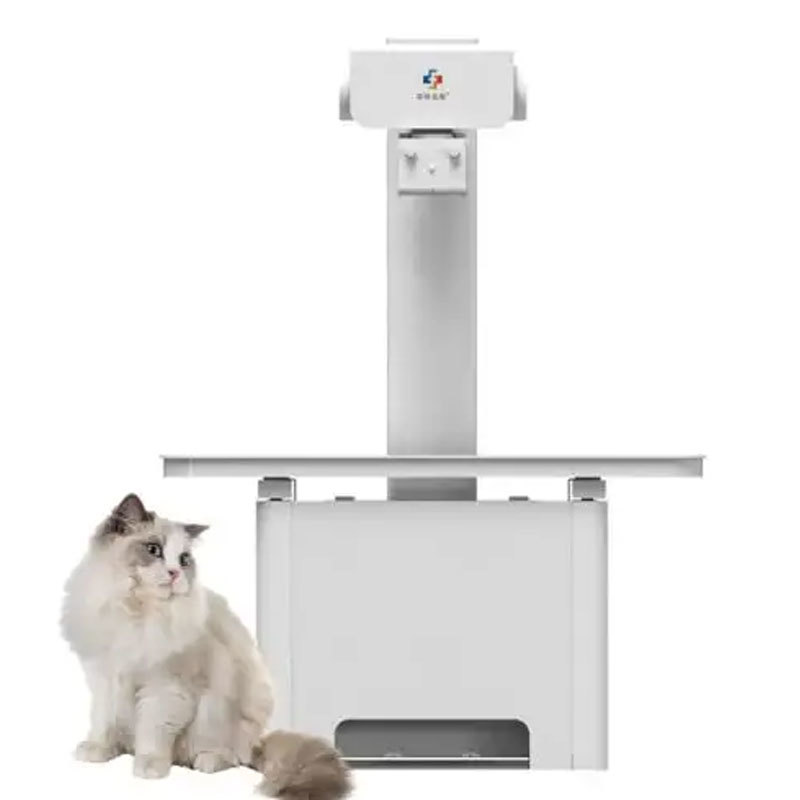Understanding the Benefits of Digital Veterinary X-ray Systems in Modern Animal Care
In the ever-evolving field of veterinary medicine, the adoption of advanced technologies is essential for improving diagnostic capabilities and patient outcomes. One such innovation is the Digital Veterinary X-ray System, which is revolutionizing the way veterinarians assess and diagnose a variety of conditions in animals. Understanding the features and benefits of these systems can greatly enhanc
In the ever-evolving field of veterinary medicine, the adoption of advanced technologies is essential for improving diagnostic capabilities and patient outcomes. One such innovation is the Digital Veterinary X-ray System, which is revolutionizing the way veterinarians assess and diagnose a variety of conditions in animals. Understanding the features and benefits of these systems can greatly enhance the quality of care provided to our pets and livestock.
Digital Veterinary X-ray Systems offer a range of advantages over traditional film-based X-ray methods. Firstly, they provide immediate image availability. Unlike conventional systems where images need to be developed, digital systems allow veterinarians to view X-rays instantly on a computer screen. This expedites the diagnostic process, enabling quicker decision-making and treatment planning.
Another significant benefit is the enhanced image quality. Digital X-rays produce clearer and more detailed images, allowing for better visualization of anatomical structures and potential anomalies. This improved clarity is crucial in identifying fractures, tumors, or other conditions that may not be easily detected with conventional films. Furthermore, digital systems allow for adjustments in contrast and brightness, aiding veterinarians in interpreting the images with greater accuracy.
The efficiency of Digital Veterinary X-ray Systems also extends to storage and retrieval of images. Digital images can be easily stored in a secure database, eliminating the need for physical storage space and reducing the risk of lost or damaged films. This also facilitates seamless sharing between veterinary professionals, fostering collaboration and more informed decision-making.
In addition, these systems are designed with the welfare of both animals and technicians in mind. Digital X-ray technology often requires lower radiation doses compared to traditional methods, minimizing exposure risks for both veterinarians and their patients. This is particularly important in veterinary practice, where animals may require multiple imaging sessions over their lifetime.
Moreover, the digital format allows for easier integration with other diagnostic tools such as ultrasound or CT imaging, creating a more comprehensive approach to animal healthcare. This interoperability enables veterinarians to provide holistic evaluations, ensuring that all aspects of an animal's health are considered.
In conclusion, Digital Veterinary X-ray Systems represent a significant advancement in veterinary diagnostics. By providing immediate access to high-quality images, improving storage solutions, and minimizing radiation exposure, these systems enhance the overall efficiency and effectiveness of veterinary care. As the industry continues to embrace technological advancements, veterinarians equipped with digital X-ray capabilities will be better positioned to deliver optimal health outcomes for their animal patients.
Digital Veterinary X-ray Systems offer a range of advantages over traditional film-based X-ray methods. Firstly, they provide immediate image availability. Unlike conventional systems where images need to be developed, digital systems allow veterinarians to view X-rays instantly on a computer screen. This expedites the diagnostic process, enabling quicker decision-making and treatment planning.
Another significant benefit is the enhanced image quality. Digital X-rays produce clearer and more detailed images, allowing for better visualization of anatomical structures and potential anomalies. This improved clarity is crucial in identifying fractures, tumors, or other conditions that may not be easily detected with conventional films. Furthermore, digital systems allow for adjustments in contrast and brightness, aiding veterinarians in interpreting the images with greater accuracy.
The efficiency of Digital Veterinary X-ray Systems also extends to storage and retrieval of images. Digital images can be easily stored in a secure database, eliminating the need for physical storage space and reducing the risk of lost or damaged films. This also facilitates seamless sharing between veterinary professionals, fostering collaboration and more informed decision-making.
In addition, these systems are designed with the welfare of both animals and technicians in mind. Digital X-ray technology often requires lower radiation doses compared to traditional methods, minimizing exposure risks for both veterinarians and their patients. This is particularly important in veterinary practice, where animals may require multiple imaging sessions over their lifetime.
Moreover, the digital format allows for easier integration with other diagnostic tools such as ultrasound or CT imaging, creating a more comprehensive approach to animal healthcare. This interoperability enables veterinarians to provide holistic evaluations, ensuring that all aspects of an animal's health are considered.
In conclusion, Digital Veterinary X-ray Systems represent a significant advancement in veterinary diagnostics. By providing immediate access to high-quality images, improving storage solutions, and minimizing radiation exposure, these systems enhance the overall efficiency and effectiveness of veterinary care. As the industry continues to embrace technological advancements, veterinarians equipped with digital X-ray capabilities will be better positioned to deliver optimal health outcomes for their animal patients.
TAG:
Related Posts
Understanding the Role of Emergency Room X-ray Machines in Patient Care
Understanding the Role of Emergency Room X-ray Machines in Patient Care
The Importance of Diagnostic Imaging in Emergency Medicine
In the fast-paced environment of an emergency room (ER), the ability to quickly diagnose a patient’s condition is crucial. **X-ray machines** play a vital role in this process, providing immediate visual insights that assist healthcare professionals in making informed




























